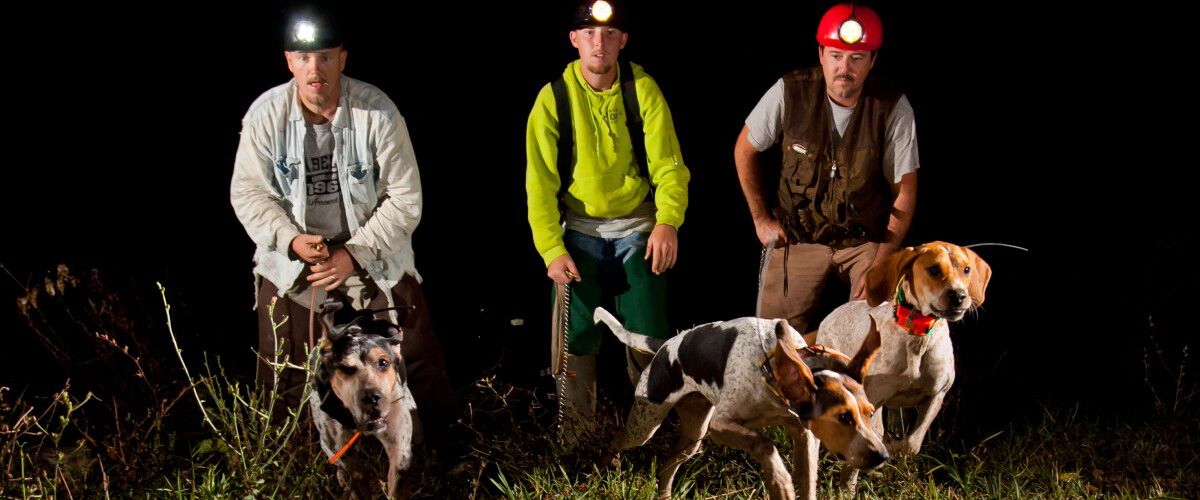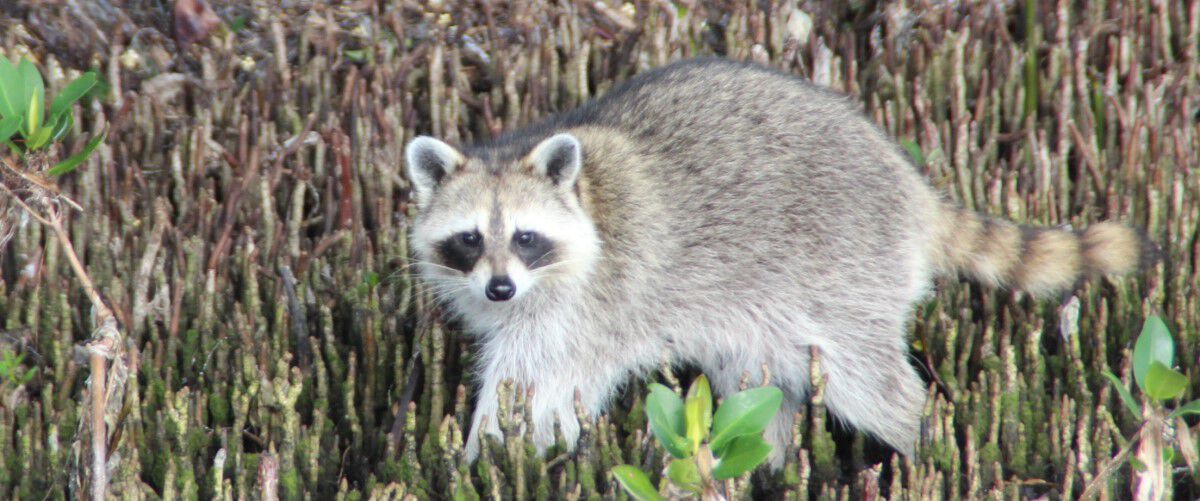Roots, Raccoons & Rimfire
By Brad Fitzpatrick

On the Saturday following Independence Day, the town of Saluda, North Carolina (population 700 or so) is overrun with coonhounds. Since 1963 the Blue Ridge Coon Dog Association has hosted its annual Coon Dog Festival complete with a parade, antique cars, food and lots and lots of coonhounds.
If throwing a parade in honor of hunting dogs seems a little odd to you then you’ve never been properly exposed to the sport of raccoon hunting. In many parts of the country, raccoon hunting roots run deep, and the experience is one of the grandest traditions in American hunting. When you’ve listened to the hounds work out a complicated track in the darkness or hear a yearling pup at full cry on its first trail, you realize why nothing else matches the special thrill.
A Long History
Along with early American settlers came their hounds, a mix of European breeds that included French Gascons, German Hanover hounds, foxhounds, bloodhounds and others. Over time these dogs were adapted to run in the woodlands and swamps of the new nation, and distinct breeds began to form.
Over time, six distinct coonhound breeds emerged. The treeing walker and English hounds share common ancestry and likely carry a great deal of foxhound blood. Blueticks bear the distinctive coloring that hints at their relationship to the Gascon hounds of France, and black and tans and redbones were breeds that originated in the south from crossing with bloodhounds and other breeds such as the Irish hound. Jonathon Plott brought his brindle dogs, which trace their lineage back to Germany’s Hanover hound, to North Carolina centuries ago. The Plott hound is now North Carolina’s state breed.

These newly formed breeds found a new target species on this side of the Atlantic: raccoons. Wily, destructive, and lethal in a fight, raccoons were a pest to early settlers but their pelts were valuable for the fur trade. Anyone with a good string of hounds in parts of the country with lots of coons could make a substantial wage well into the twentieth century, and good houndsmen were held in high esteem, especially in the southern U.S.
The Modern Coonhound
Raccoon hides don’t pay as well as they once did, but there’s still big money to be made by coonhunters. First prize in the AKC Coon Hunting World Championship in 2009 was a special-edition 4x4 pickup truck, and it’s not unusual for individual competition hounds, many of them under 5 years old, to have earned more than $50,000 in their career.
Competition hunts are typically scheduled outside of the traditional hunting season, which runs from roughly November to late January or February when raccoon pelts are prime and worth the most money. This means that when season ends coonhound owners hit the road and begin competing on the weekends. But the real test comes with the start of hunting season.
I’ve followed black bears, rabbits, foxes and even African leopards with hounds, but I still rank raccoons as the cleverest of all game for hounds to track. Raccoons that have been “treed” quickly learn the secrets to avoid capture, either by throwing the dogs off the scent, going underground or choosing den trees to escape. Hounds, too, have their own personality and character: Many competition hounds move through the woods quickly, pick up hot tracks, and “lay ups” with short races to maximize scores (points are awarded for the most treed raccoons in one night). But other hounds work the trail much more slowly. One of my favorites was an old bluetick hound I hunted with as a boy. That dog was cold-nosed, meaning it would work on an old track, but listening to Blue unravel a track, pick up his pace and finally tree a raccoon—an event signaled by his long, deep, tree bellow in the night—was one of the greatest thrills in hunting.
Gear You Need
The most obvious piece of equipment you need is a well-trained dog or two. If you don’t have one, relax—there are probably clubs and breeders around you that would be willing to let you to tag along at first. That way you can determine whether chasing raccoons through the darkness is truly for you.
Traditionally, hunters wore their mining lights when hunting at night, and that inspired the modern bump cap raccoon hunting light design. Any light will do, but it must be bright enough to see a raccoon far up a tree and it must be hands-free to allow you to handle dogs and rifles. Most hunters wear rubber boots or even waders. After all, where the raccoons (and dogs) go, you must follow, and oftentimes that involves crossing creeks. Briar-proof jackets and chaps are also popular.
Today’s coonhounds are worth upwards of tens of thousands of dollars, and so hunters want to keep careful tabs on them. For that reason, hunters almost exclusively run GPS tracking collars on their dogs. Some of these handheld tracking units, offer advanced features like hunt mapping, property boundary views, treeing indicators (to let you know your dog is treed) and reverse navigation that will help you find your way back to your truck. In case of emergencies these units function as satellite phones.
Rifles & Ammo
Lastly, assuming you’re hunting behind a good dog that has seen the track through to completion, you’ll need a rifle. Bolt-action, semi-auto, pump and lever-action 22 LR rifles are best because they offer improved accuracy over handguns and can place the bullet precisely, which is important for preserving the pelt and dispatching the raccoon quickly. I prefer hunting with a suppressor because it helps preserve my hearing and is courteous to people who are sleeping should your dog tree near the landowner’s home.
Lastly, there’s bullet selection. One of the most popular raccoon hunting rounds is CCI’s Stinger 22 LR which pushes a 32-grain plated HP bullet from the muzzle at 1,640 fps. That equates to over 100 foot-pounds of energy at 50 yards, which is plenty to anchor a raccoon with one well-placed shot.
Put it all together, and you not only have a hunt—you have a tradition that goes back centuries. And it’s waiting out in the darkness wherever raccoons roam.